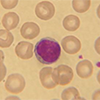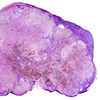Urea (Serum)
Specimen Volume
1.0 mL bloodSample Preparation
Centrifuge
Turnaround Time
1 daySample Processing In Laboratory
Usual
Sample Stability
7 days at 2 to 8°C
General Information
Catabolism of proteins and amino acids results in the formation of urea, which is predominantly cleared from the body by the kidneys.
Measurement of serum urea has been used for many years as an indicator of kidney function. However, creatinine measurement is now generally accepted as a superior indicator of kidney function. However, urea measurement, in conjunction creatinine measurement, may still provide useful clinical information in particular circumstances.
Increased urea with normalcreatinine concentrations indicates a pre-renal increase in urea which may be due to a high protein diet, increased protein catabolism, reabsorption of blood proteins after GI haemorrhage, glucocorticoid treatment, dehydration or decreased perfusion of the kidneys.
An increase in both urea andcreatinine concentrations may indicate an obstructive post-renal condition such as malignancy, nephrolithiasis or prostatism.
A low urea and increased creatinine may indicate acute tubular necrosis, low protein intake, starvation or severe liver disease.
Patient Preparation
None
Notes
No significant interference from haemolysis or lipaemia
Reference Range
Adult male/female reference range: 2.5 - 7.8 mmol/L (Pathology Harmony)
Source of Reference Range
Pathology HarmonySpecifications
- EQA Status: NEQAS
- EQAS Scheme: Yes








